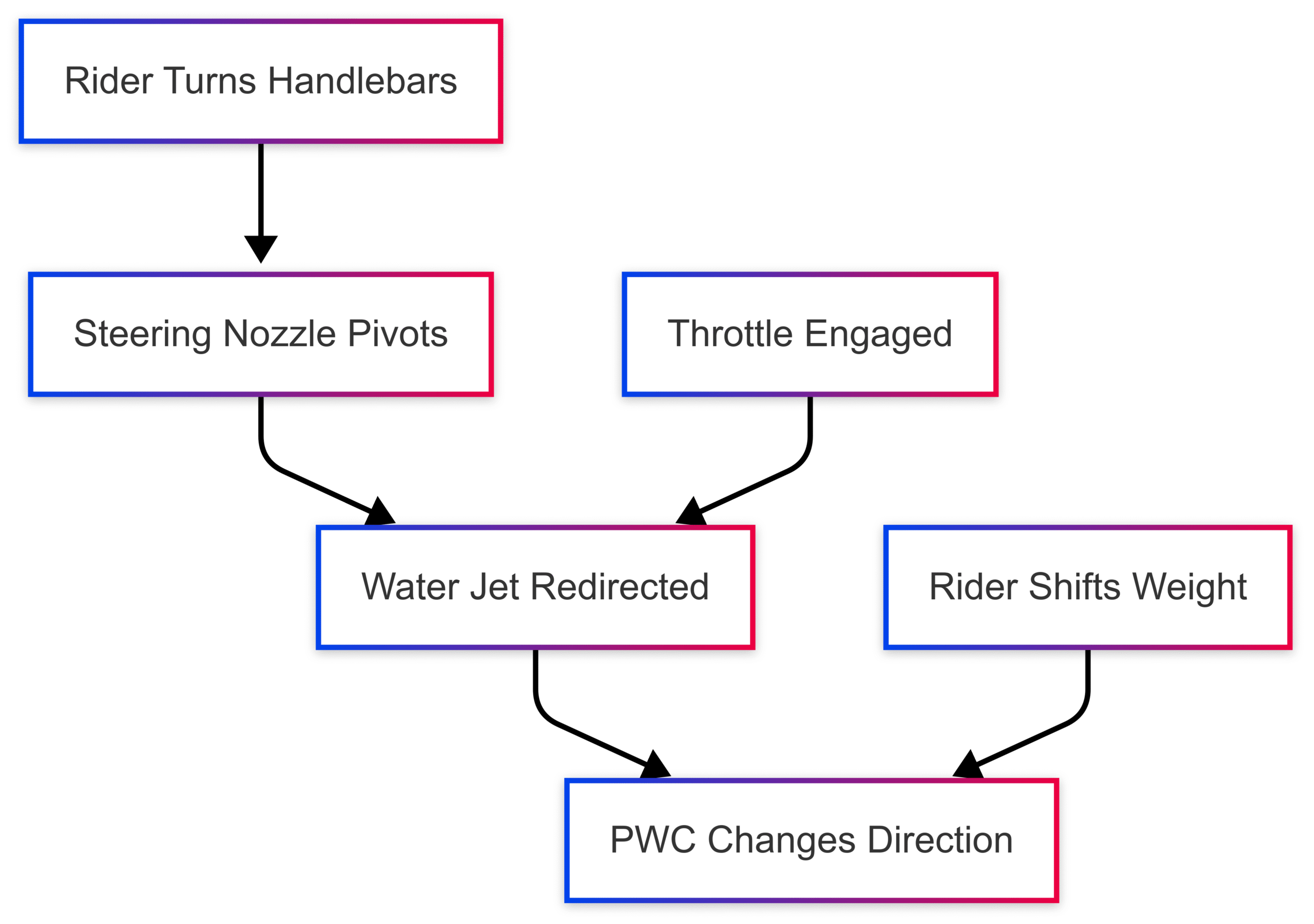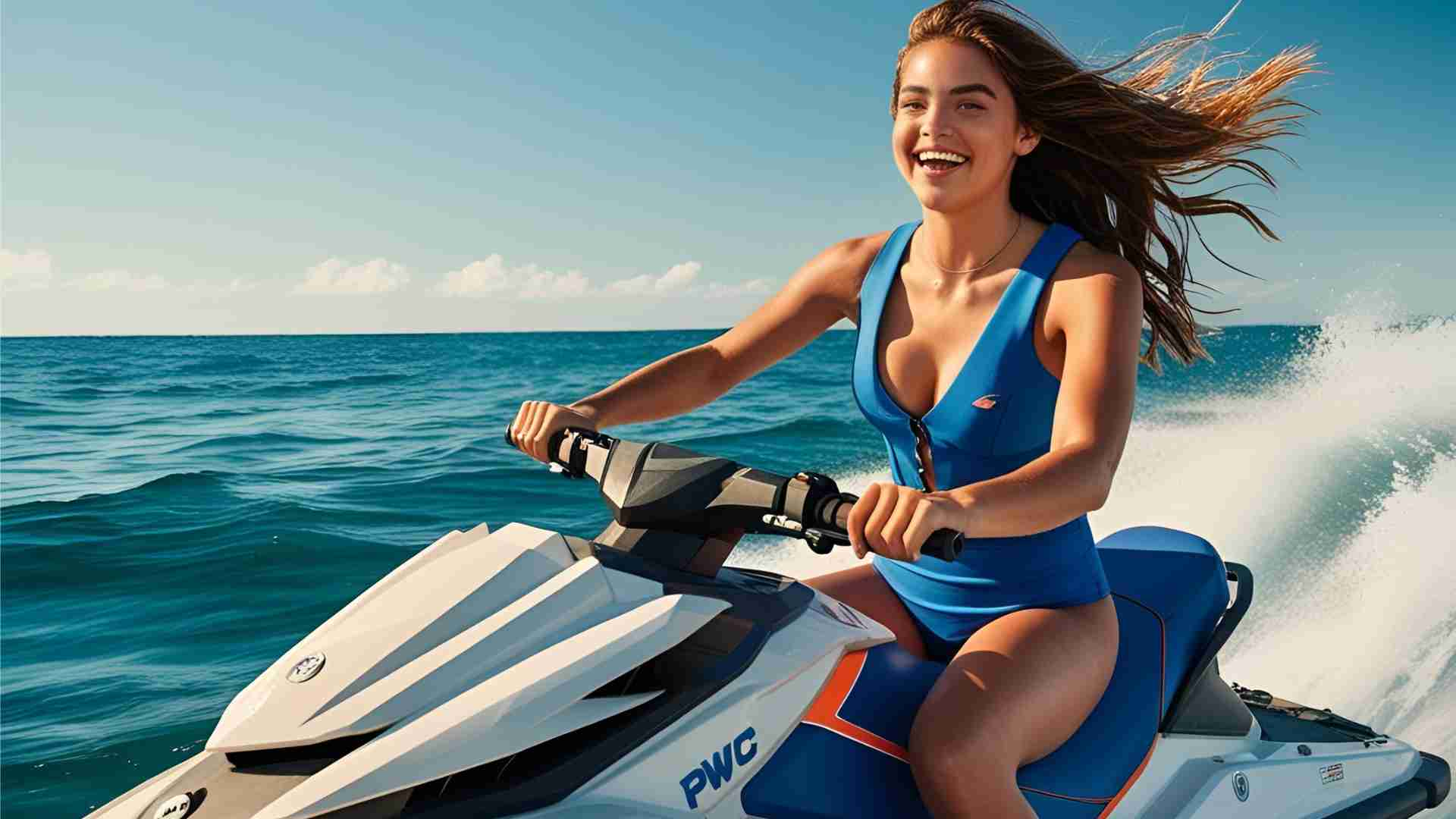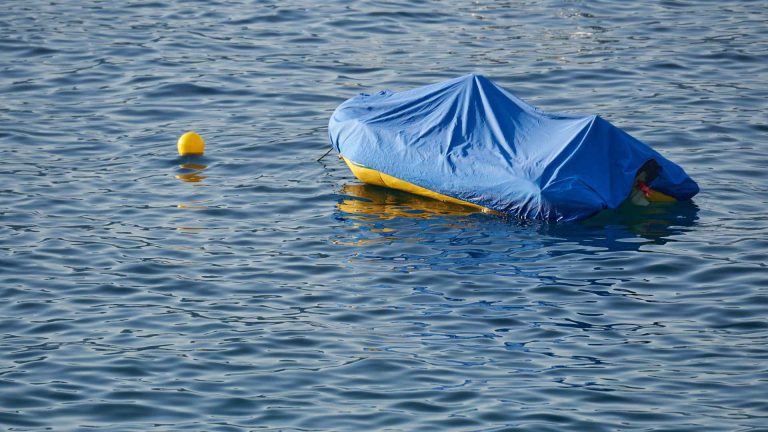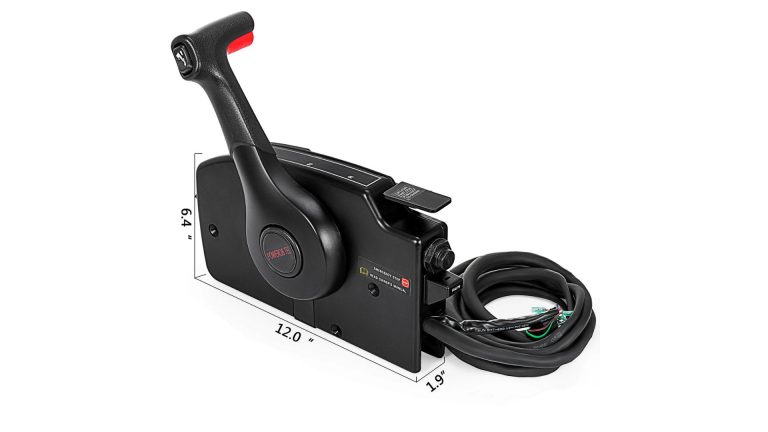[FREE] What is needed for steering control on a PWC
Discover the essentials of PWC steering control, including jet pump, steering nozzle, and throttle. Learn safe operation tips for personal watercraft.
Personal Watercraft (PWC), commonly known as jet skis, WaveRunners, or Sea-Doos, offer an exhilarating way to navigate the water. Their agility and speed make them a favorite among water sports enthusiasts, but effective steering control is critical for both safety and enjoyment. Unlike traditional boats, PWCs rely on a jet propulsion system, which introduces unique steering dynamics. This guide explores the essential components, mechanics, and techniques required for steering control on a PWC, along with safety tips, maintenance advice, and insights from real users to help you master the art of PWC navigation.
Understanding PWC Steering: The Basics
Steering a PWC is fundamentally different from steering a conventional boat due to its jet propulsion system. Instead of a rudder, PWCs use a jet of water expelled from a steering nozzle to control direction. This system requires the engine to be powered to maintain steering control, making throttle management a key aspect of operation. The primary components involved in PWC steering include the jet pump, steering nozzle, impeller, stator, handlebars, and throttle, with rider weight distribution and environmental factors also playing significant roles.
Why Steering Control Matters
Proper steering control ensures safe navigation, allowing riders to avoid obstacles, make precise turns, and maintain stability at varying speeds. Misunderstanding or neglecting these mechanics can lead to accidents, especially in crowded or rough waters. For example, releasing the throttle abruptly can result in loss of steering, causing the PWC to continue in its last direction, potentially leading to collisions. Understanding these dynamics is not only crucial for enjoyment but also a requirement for obtaining a boating license in many regions.
Essential Components for PWC Steering
To achieve precise steering control, several components work in harmony within the PWC’s jet propulsion system. Below, we detail each component’s role and how it contributes to maneuverability.
1. Jet Pump: The Heart of Propulsion
The jet pump is the core of a PWC’s propulsion system. It draws water from beneath the craft through an intake grate and expels it at high pressure through the steering nozzle. This process generates the thrust needed to move the PWC forward. The jet pump’s efficiency directly impacts steering responsiveness, as the force of the water jet determines how effectively the craft can change direction.
- Function: Pulls in water and expels it to create thrust.
- Impact on Steering: Provides the propulsion force necessary for directional control via the steering nozzle.
2. Steering Nozzle: Directing the Water Jet
The steering nozzle, located at the rear of the PWC, is connected to the handlebars. When the rider turns the handlebars, the nozzle pivots, redirecting the water jet to steer the craft. For example, turning the handlebars to the right pivots the nozzle to the right, pushing the water jet to the left, which causes the PWC to turn right.
- Function: Redirects the water jet to control direction.
- Advanced Features: Many modern PWCs include variable trim systems, allowing riders to adjust the nozzle’s angle for optimized performance in different conditions.
3. Impeller: Generating Thrust
The impeller, a rotating component with curved blades inside the jet pump, accelerates water to create thrust. The design and pitch of the impeller blades influence the PWC’s speed and steering responsiveness. High-performance impellers, found in models like the Sea-Doo RXP-X 325, are optimized for quick acceleration and sharp turns.
- Function: Accelerates water to produce thrust.
- Impact on Steering: Determines the strength of the water jet, affecting turning precision.
4. Stator: Enhancing Water Flow
The stator, located downstream of the impeller, straightens and accelerates the water flow before it exits the steering nozzle. This increases the efficiency of the jet pump, enhancing steering control by ensuring a consistent and powerful water jet.
- Function: Redirects and accelerates water flow.
- Impact on Steering: Improves the jet’s velocity, leading to better maneuverability.
5. Handlebars: The Rider’s Control Interface
The handlebars are the rider’s primary means of controlling the PWC’s direction. Connected to the steering nozzle via cables or electronic systems, they allow precise adjustments. A relaxed but firm grip is essential to avoid oversteering, which can cause abrupt turns and potential loss of balance.
- Function: Translates rider input into nozzle movement.
- Best Practice: Avoid sudden or aggressive movements to maintain stability.
6. Throttle: Powering Steering Control
The throttle, typically a lever on the right handlebar, controls the engine’s power output, which directly affects the jet pump’s thrust. Without throttle application, the PWC loses steering control, as the jet pump requires water flow to function. Gradual throttle adjustments ensure smooth acceleration and precise steering.
- Function: Regulates engine power and water jet strength.
- Key Tip: Maintain throttle engagement during maneuvers to preserve steering control.
7. Rider Weight Distribution
The rider’s body position and weight distribution significantly influence steering. Leaning into turns, similar to riding a motorcycle, helps maintain balance and enhances turning precision. For example, shifting weight to the left during a left turn lowers the center of gravity on that side, improving stability.
- Function: Enhances balance and turning efficiency.
- Technique: Move your foot back on the turning side for added stability.
8. Environmental Factors
Water conditions, wind, and currents affect steering performance. Calm water provides better grip for sharp turns, while choppy conditions can reduce traction, making steering more challenging. Riders must adapt their techniques to maintain control in varying environments.
- Impact: Rough water may require more throttle and precise handlebar inputs.
- Consideration: High-performance PWCs, like Yamaha’s FX series, are designed to handle rough conditions better due to their hull designs.
The Science Behind PWC Steering
PWC steering is grounded in Newton’s third law of motion: for every action, there is an equal and opposite reaction. The jet pump expels water backward, propelling the PWC forward. By redirecting the water jet via the steering nozzle, the rider alters the direction of this force, steering the craft. This principle, combined with the rider’s ability to adjust throttle and weight distribution, creates a dynamic and responsive steering system.
Diagram: PWC Steering Mechanics
Below is a simplified flowchart illustrating how steering inputs translate to PWC movement:

This diagram shows the interplay between handlebar input, throttle, and weight distribution in steering a PWC.
Safety Measures for PWC Steering
Safe operation of a PWC requires understanding its steering dynamics and adhering to best practices. Here are key safety considerations:
1. Steering Responsiveness at Different Speeds
- Low Speeds: PWCs are highly maneuverable, allowing sharp turns. However, steering is less responsive without sufficient throttle.
- High Speeds: Steering becomes more sensitive, requiring careful inputs to avoid oversteering or losing control.
- Tip: Practice at varying speeds in open water to understand your PWC’s handling characteristics.
2. Avoiding Oversteering and Understeering
- Oversteering: Turning the handlebars too sharply can cause abrupt direction changes, risking ejection. Use smooth, gradual inputs.
- Understeering: Insufficient steering input results in wider turns, potentially causing collisions. Ensure adequate handlebar movement and throttle application.
- Practice: Regular practice in controlled environments helps develop intuitive steering control.
3. Using the Safety Lanyard
Most PWCs are equipped with a safety lanyard that connects the rider to the engine’s shut-off switch. If the rider falls off, the lanyard disengages, stopping the engine to prevent the craft from continuing unattended.
- Usage: Attach the lanyard to your wrist or life jacket before starting the engine.
- Example: Sea-Doo offers green lanyards for beginners, limiting speed to enhance control during learning.
4. Emergency Steering
In emergencies, maintain throttle to steer around obstacles rather than releasing it, which eliminates steering control. Practice emergency maneuvers in safe areas to build confidence.
Maintenance Tips for Optimal Steering Performance
Regular maintenance ensures the steering system remains responsive and reliable. Here are key maintenance practices:
1. Regular Inspection
- Components to Check: Handlebars, steering cables, nozzle, impeller, and stator.
- Frequency: Inspect before and after each use for wear, damage, or debris.
- Action: Address issues like loose cables or clogged intakes immediately to prevent steering failure.
2. Cleaning and Lubrication
- Cleaning: Rinse the steering nozzle and jet pump with freshwater after use to prevent corrosion from saltwater or debris.
- Lubrication: Apply manufacturer-recommended lubricants to steering cables and pivot points to ensure smooth operation.
- Tip: Avoid household cleaners; use marine-specific products to protect components.
3. Professional Servicing
- When to Seek Help: Persistent steering issues, unusual noises, or reduced responsiveness warrant professional inspection.
- Benefit: Certified technicians can diagnose and repair complex issues, ensuring safe operation.
Popular PWC Models and Steering Features
Different PWC models offer unique steering characteristics, tailored to various riding styles. Below is a comparison of popular models, their steering features, and approximate prices (based on general market data):
| Model | Steering Features | Hull Design | Approx. Price (USD) |
|---|---|---|---|
| Yamaha FX Cruiser SVHO | RiDE technology (forward/neutral/reverse), adjustable trim, ergonomic seat | Stable, deep-V | $16,000 – $18,000 |
| Sea-Doo RXP-X 325 | Ergo-lock seat, variable trim, racing-inspired deep-V hull for sharp turns | Deep-V, high-grip | $17,000 – $19,000 |
| Kawasaki Jet Ski Ultra 310LX | Electronic throttle control, adjustable steering nozzle, stable hull | Deep-V, performance | $18,000 – $20,000 |
| Taiga Orca (Electric) | Electric jet propulsion, precise steering nozzle, eco-friendly design | Stable, flat hull | $20,000 – $22,000 |
Chart: PWC Model Comparison

Buyer Reviews: Real-World Insights
To provide a balanced perspective, here are anonymized reviews from PWC owners, highlighting their experiences with steering control:
- John M., Yamaha FX Cruiser Owner: “The RiDE system makes docking a breeze. Steering is super responsive at high speeds, but you need to keep the throttle on to avoid losing control in tight turns. Took some practice, but it’s intuitive now.”
- Sarah K., Sea-Doo RXP-X 325 Owner: “The Ergo-lock seat really helps with sharp turns. I feel locked in, and the deep-V hull grips the water like nothing else. Just wish the learning curve for throttle control wasn’t so steep for beginners.”
- Mike T., Kawasaki Jet Ski Ultra 310LX Owner: “Steering is smooth, especially in rough water. The electronic throttle is a game-changer for precision. Maintenance is key—had a clogged impeller once, and it messed with steering.”
- Emma L., Taiga Orca Owner: “As an electric PWC, the Orca’s steering is surprisingly responsive. It’s quiet, which makes it easier to focus on handling. The flat hull is great for calm waters but slips a bit in choppy conditions.”
These reviews emphasize the importance of practice, maintenance, and understanding model-specific steering dynamics.
FAQs About PWC Steering
What is vital to steering a PWC?
How do I stop or slow down a PWC?
How do I turn my PWC?
What happens if I shut off the engine?
Where is the steering nozzle located?
Key Takeaways
- Steering Mechanism: PWCs use handlebars to control a steering nozzle, redirecting a high-pressure water jet for precise maneuvering.
- Throttle Dependency: Steering requires throttle application; releasing it results in loss of control.
- Hull Design: Flat hulls offer better grip for turns, while deep-V hulls excel in rough water.
- Safety: Always use a safety lanyard, practice in open water, and maintain a 360-degree lookout.
- Maintenance: Regular inspection, cleaning, and lubrication ensure optimal steering performance.
- Training: Completing a boating safety course is essential for legal and safe PWC operation.
Conclusion
Mastering steering control on a PWC involves understanding the jet propulsion system, practicing throttle and handlebar techniques, and adapting to environmental conditions. By leveraging components like the jet pump, steering nozzle, and impeller, riders can achieve precise and responsive control. Safety measures, such as using a lanyard and avoiding abrupt throttle changes, are critical to preventing accidents. Regular maintenance and familiarity with your PWC’s specific features, as seen in models like the Yamaha FX Cruiser or Sea-Doo RXP-X, enhance performance and longevity. Whether you’re a beginner or an experienced rider, this guide equips you with the knowledge to navigate the waters confidently and safely. For further learning, consider enrolling in a NASBLA-approved boating safety course from providers like Drive A Boat USA or Boat-Ed to ensure compliance and expertise.
Happy Boating!
Share [FREE] What is needed for steering control on a PWC with your friends and leave a comment below with your thoughts.
Read Attwood Sahara automatic bilge pump 12 V 48 l Review until we meet in the next article.






